
|   |

|   |
Remembering Zohra Segal (1912-2014) - Dr. Sunil Kothari e-mail: sunilkothari1933@gmail.com Photos courtesy: Dr. Sunil Kothari's archives July 20, 2014 Zohra Segal was a dancer, who had worked with the legendary Uday Shankar. Born in Sharanpur in 1912, in a large orthodox Muslim family from Rampur, she was from a very young age of independent temperament. After passing her matriculation examination in 1924, she travelled with her uncle to Germany and studied modern dance from Mary Wigman. During those years, Uday Shankar was making his name in Europe and on knowing about Zohra studying dance, he invited her to join his company. When she met Uday Shankar, she had said, "I was surprised to see a man as a dancer and wondered what this young man was doing as a dancer. But what I saw I liked very much as it had a lot of folk element and some of the music was based on peasant music which I loved. I thought his partner Simkie was a Kashmiri girl because though she had a fair complexion she had dark hair. But she had adapted wonderfully; in her movements and feelings she was very Indian. I liked what they did, and it made me homesick. I thought it was beautifully presented and very colourful." At that time Zohra was in Dresden and wanted to return to India. 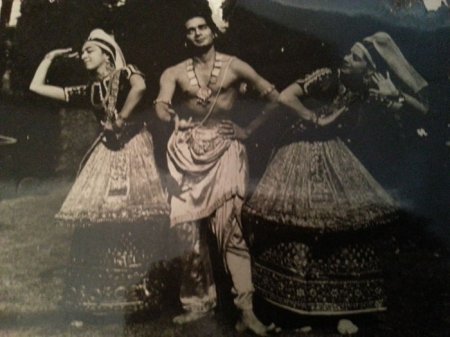 Zohra, Uday Shankar and Simkie in 'Nirasha' at Dartington Hall. Note the Manipuri costumes 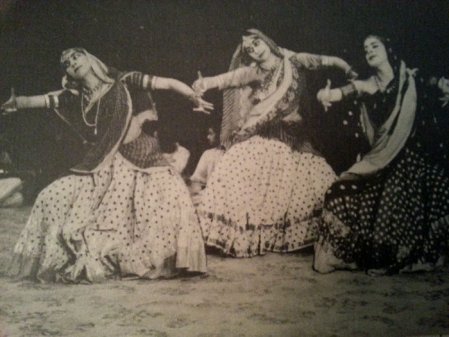 From left: Zohra, her sister Uzra and Simkie She worked with Uday Shankar from 1935 till 1943. She toured with him throughout USA and Europe. When in Dartington Hall in UK, she danced with him and Simkie in a choreographic work 'Nirasha.' Their 'Snanam' - women taking bath - with Simkie, Zohra's sister Uzra and Zohra was very popular. Both the sisters Uzra and Zohra were prominent dancers in Uday Shankar's company till Amala (Nandy) joined them at Almora Centre. Zohra married Kameshwar Segal, a young Hindu painter, cinematographer and a dancer, eight years younger to her, in Uday Shankar's troupe at Almora in 1943 and moved to Lahore with him to start Zoresh Dance Company where the redoubtable dance scholar Mohan Khokar joined as a young student to study dance. She had fond memories of Mohan Khokar and used to tell me about their early experiences of running a dance school in Lahore. 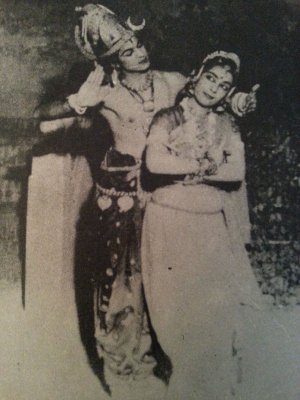 With husband Kameshwar Segal
in a duet as Shiva and Parvati Since I had known Ram Gopal before I left for London, he introduced me to her with typical sense of humour for which Zohra was known. A man who admired her acting met her for the first time and told her, "'Oh,I am so lucky to have met you!" to which Zohra had quipped, "You lucky man, you should have met me when I was young and ugly and you are meeting me now when I am old and ugly!" and laughed heartily. When I met her, Ram Gopal reminded her about that joke. And she repeated it with gusto! I was indeed amused listening to it. By that time I had met Richard Buckle, the dance critic who had organized a marvelous exhibition of the Russian impresario,the legendary Diaghilev and written a book 'In search of Diaghilev.' He had presented a copy to me. Inspired by reading it, I was keen to organize a similar exhibition on Uday Shankar. Therefore, I went to Dartington Hall to collect material on Uday Shankar. I learnt from Zohra that Simkie, Uday Shankar's French partner, was living in Bath. She told me to go and meet her and interview her. My friend Indira Jaisingh, the well-known lawyer and former additional solicitor general, was at that time studying Law in London. Zohra gave me a tape recorded message to play for Simkie in which she introduced me. Simkie had by then married a Britisher. Indira accompanied me to Bath and when we went to meet her, Simkie's husband told us politely that she was unable to meet me and give an interview about her career with Uday Shankar. So we could not meet her. The well-known British dance critic Arnold Haskell was also staying at Bath. I had written to him that we were visiting Bath and would like to meet him. So,we went to see him and he welcomed us warmly. Since I had read his autobiography 'In His True Centre,' he was pleased to meet me as a young dance critic from India. He inscribed a copy of his autobiography and gave it to Indira Jaisingh. Before Zohra came to London, there was a tragedy in her life. Kameshwar could not earn enough money to support Zohra and the children. They moved to Bombay and Zohra met Prithviraj Kapoor, who was directing Hindi plays. Zohra joined Prithviraj's company and started performing and as a dancer also choreographed movements for the plays. Meanwhile unable to bear the depression, Kameshwar committed suicide leaving Zohra and children in a terrible state. Many a time Zohra had recounted this story and while telling about Kameshwar's suicide, she would almost break down. I had heard this story and had tears in my eyes. But Zohra would wipe her tears and say to the audience, "Tell me what could such a handsome man have done marrying someone ugly like me? So he committed suicide." She had an immense inner strength and would laugh at herself making light of her tragedy. 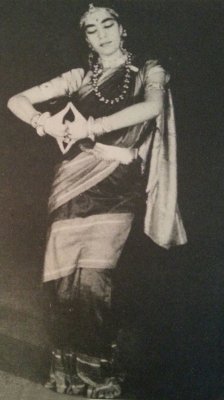 Note the costume designed by Uday Shankar 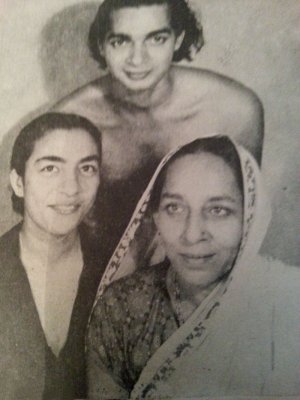 Zohra with Uday Shankar & his mother in Paris She worked with Prithviraj Kapoor till 1954. Prior to that she had received a scholarship to study theatre at Royal Academy of Art (RADA) in London where she earned distinction. She appeared on television in Britain and also took part in plays, winning laurels for her acting. Even before she joined Prithviraj, she had appeared in1950 in a film titled 'Dharati ke Lal' based on Bengal famine. Balraj Sahani and his wife Damayanti also acted in that film, which created history. Zohra had joined IPTA group and shared their ideology and believed in raising her voice against injustice and atrocities. Before that in 1946 she had acted in a film 'Nicha Nagar.' She had also acted in Alkazi's Hindi play 'Ek thi Nani' based upon Lorca's 'House of Barnada.' When she returned from London in early 70s, Indira Gandhi asked her to develop a Folk Dance Ensemble of India. Indira Gandhi was influenced by seeing a Russian choreographer's Russian Folk Dance Ensemble. Zohra formed the group and started giving intensive training to the young dancers who joined the ensemble from different parts of India. I had seen some rehearsals with Mohan Khokar, as the ensemble was in charge of Sangeet Natak Akademi. For reasons one does not know why, it did not take off. Zohra was indeed very much disappointed as she was keen to build up the Folk Dance Ensemble. She had seen how Uday Shankar was adapting various folk dances of India in his troupe, which were very popular. The young generation of today mainly knows Zohra as an actress, because of her appearances in Hindi and English movies. Her role in Mani Ratnam's 'Dil se' was much praised. She acted with Yul Brynner, Saeed Jaffrey, with Michael Caine in 'Jewel in the Crown,' 'Bhaji on the Beach' and the latest Hindi film 'CheeniKum' in which she played the role of mother to Amitabh Bachhan. She had a phenomenal memory. Her recitation of Faiz Ahmed Faiz's Urdu poem Abhi to main jawan hun (I am still young) without missing a single word or stanza, and with such evocation, lowering her eyes as young bride conveying through abhinaya Abhi to main jawan hun, none can ever forget. With a twinkle in her eye and exactly selecting the words in Urdu she used to amaze her audiences even at the age of 100. Celebrating her birthday when she turned 100, a special video film made by theatre director M.K.Raina's son Anant Raina, was screened. It revealed her multi-faceted personality in a captivating manner. Poet Firaq's stanza with a little variation applies to her: 'People would remember her for long and poet would say you must have known 'Zohra'! 'Her recitation of Mujh se pehali si Muhabbat (my first love),Teri ankhon ke siva is duniya me rakha kya hai? (Without your eyes what else is there for me?) are so well known that invariably when they are rendered anywhere, people think of Zohra. Since Zohra gave up dancing and was more active in theatre, naturally she was known more for her activities in theatre, television and films. She stayed with her daughter Kiran Segal, the well known Odissi dancer. Kiran gave up Bharatanatyam, studied Odissi under Mayadhar Raut and started her own dance academy. Zohra continued to remain active in theatre, TV and films. Theatre director and actor M.K.Raina recalls, "Since Zohra-ji was committed to theatre and had such wonderful charisma, we theatre actors, directors were under her spell. She was an endearing human being. When she discovered that she had cancer of her foot, she took it in her stride. We used to inquire after her, as to how did it feel? She would say, 'Bahut garam lagta hai- feels very hot. Would you like to touch it?' And when we would touch her foot she would laugh and say how she had made each one of us touch her feet!" Zohra supported Safdar Hashmi's Sahamat. He was a playwright and was killed doing street theatre. The artists' community supported his cause and Zohra would invariably come on 1st January and recite poems and take part in its activities. She was so professional that when M.K.Raina would go to pick her up, he would find her rehearsing. She would make him wait and say she had not completed her physical exercises that she had learnt from Uday Shankar. Even at an advanced age she would regularly do those warm ups. She was always punctual and never late for any shooting or rehearsal. Also being professional she would always ask, "How much are you going to pay me, baby? I am a professional!" It was never misunderstood and people loved her. Her naughty sense of humour was seen in a brief video clipping screened during her memorial organized by National School of Drama (NSD), Sangeet Natak Akademi (SNA) and Sahamat on 17th July 2014 at Abhimanch Auditorium at NSD, Delhi. Zohra was to leave for Canada for a film shooting. While being interviewed, she was asked, "What is the secret of your amazing zest for life?" Without blinking an eyelid, she said naughtily, "Sex!" and everyone in the auditorium laughed. She later on explained: "Arrre, yeh budhiya aurat ka sex se kya vasta? (What does this old hag have to do with sex?). But I mean female sex gender- imagine so strong that she, though delicate, bears a child for nine months!" Several people from diverse fields, theatre, film, music, dance, painting, poets, art lovers, people from Sahamat, as it were the 'who's who' of Delhi art world had gathered to pay her tributes. Few who spoke reiterated her zest for life. Ashok Vajpeyi summed it up saying, "Not that we shall remember her for she lived for 102 years. It was a matter of great times that she lived in, with great people, committed, and along with an unbelievable sense of humour, to laugh at one's self, at the same time to raise her voice against things which were unacceptable and against social atrocities. An artist of highest calibre she makes us feel that one must have courage to carry on that legacy!" When I curated an exhibition on centenary celebrations of Uday Shankar (2000-2001) in Delhi, commissioned by IGNCA, I again got an opportunity to meet her at leisure during the course of the year, to reminisce and also collect some photographs from her. We had arranged a series of lectures and reminiscences. Zohra came and spoke charmingly about her days with Uday Shankar and the time she had spent at Almora. Even when one lives in Delhi, it is so difficult to connect with people. But whenever I called her, she would tell Kiran to call me to their home and meet her. She loved to reminisce about those wonderful years of her career as a dancer with Uday Shankar. Because of Mohan Khokar, Ram Gopal and Kiran, she knew me well and blessed me for writing my books on dance. She enjoyed going through the exhibition at IGNCA, and told many stories stopping near some photos of hers with Uday Shankar. What amazing memory she had. And one felt humble before her. She would indulge us and bestow her love on us. Scholar and anthropologist Prof. Joan L Erdman of Columbia University, Chicago, has written a biography of Zohra Segal titled 'Stages: The Art and Adventures of Zohra Segal.' And Kiran Segal has written her mother's biography 'Zohra Segal: Fatty' released on Zohra's 100th birthday in Delhi. There are several interviews of hers by scholars like Dr. Kapila Vatsyayan and others with Indira Gandhi National Centre for the Arts (IGNCA) and SNA and private individuals like M.K.Raina's son Anant Raina. And there are also several clippings of her recitations. These are national treasures. Zohra had received innumerable awards from SNA (1967), UP SNA (1991) Padma Shri (1998), Kalidas Samman (2001), SNA Fellowship (2004) and Padma Bhushan (2010). As was said during the memorial meeting, "Women like Zohra Segal are not made any more. They appear once in a century." Long live, Zohra Segal!  Dr. Sunil Kothari is a dance historian, scholar, author and a renowned dance critic. He is Vice President of World Dance Alliance Asia Pacific India chapter, based in New Delhi. He is honored by the President of India with Padma Shri, Sangeet Natak Akademi award and Senior Critic Award from Dance Critics Association, NYC. He is a regular contributor to www.narthaki.com, the roving critic for monthly magazine Sruti and is a contributing editor of Nartanam for the past 12 years. Post your comments Pl provide your name and email id along with your comment. All appropriate comments posted with name and email id in the blog will also be featured in the site. |